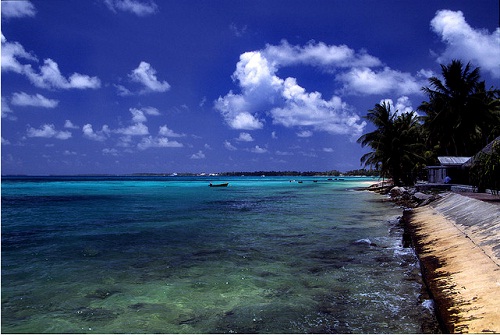
While it is by no means on the same scale as the crisis affecting the Horn of Africa, drought is also leading to disaster on the tiny South Pacific atolls of Tokelau. Home to around 1,500 people, the New Zealand-administered territory is entirely reliant on rainwater; with less than a week’s supply of potable water left on the atolls, 136,000 more liters are being shipped in via the Royal New Zealand Air Force and the US Coastguard.
At the end of September, neighboring Tuvalu went as far as declaring a state of emergency due to drought. Imposing a strict system of rationing, families are receiving two to four buckets of water a day on the main island of Funafuti, according to Olioliga Iosua, Permanent Secretary in Tuvalu’s Ministry of Public Utilities. Desalination units are being airlifted in from Australia and New Zealand, but disease is already spreading among the population.
Is this a message that the end is near for the residents of Tuvalu and Tokelau – that they will soon have to depart for other Pacific islands? Perhaps. Could it be taken as a sign that these atolls were not suitable for inhabitation in the first place? Maybe.
It definitely is a curveball to the community claiming that rising sea levels would be the cause of an environmental exodus. While the desalination process will help prolong the islanders’ stay, it is – in comparison with traditional techniques – very costly, as well as being energy intensive. And, these two variables are somewhat related: water produced from desalination systems using conventional sources of energy (oil and electricity) is cheaper than that produced by renewable sources such as photovoltaics or wind power. But then emissions come into play: Tuvalu is among the leading voices in the climate change awareness campaign, so for them to start emitting gases ‘because it’s cheaper than using renewable energy’ is a line of argumentation they cannot afford to take.
But, let’s put this in perspective, as the US Bureau of Reclamation did in their report: “At $3 per 1000 gallons, water produced using advanced desalination and water purification technologies might seem expensive. Consider, however, that consumers have shown a great willingness to pay the equivalent of $7,945 per thousand gallons for ‘designer’ bottled water (based on a shelf price of $.99 per half liter bottle).”
Tuvalu has already managed to generate income by diversifying its exports into the selling of internet addresses (they have been blessed with the “.tv” top level domain) – and I’m pretty certain you have seen FIJI Water on the shelves. Looking at the numbers, maybe Tuvalu and Tokelau should consider exporting one of the resources they are left with, once the desalination infrastructure is in place. Who knows, in the future, maybe your drinks order will actually save lives.

